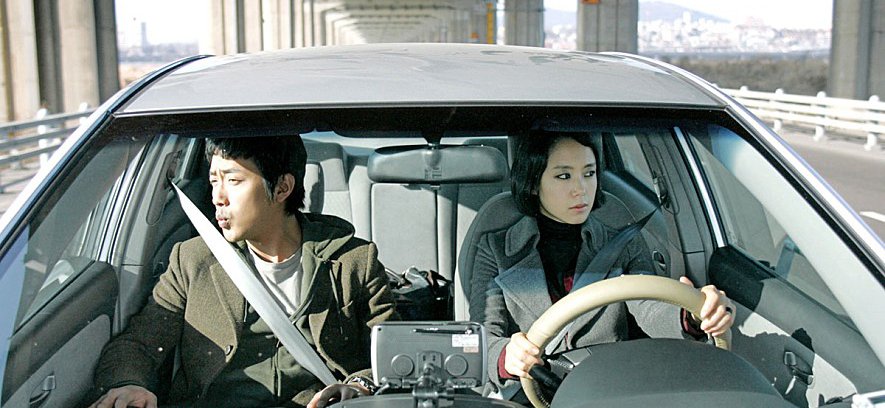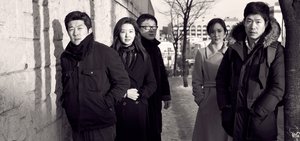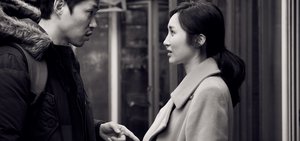KFN SEOUL ON SCREEN – PROGRAMME NOTE

Korean Film Night
In collaboration with The Korean Film Archive (KOFA), The Korean Cultural Centre UK welcomes you in 2023 to Korean Film Nights, our year-round programme of film screenings and talks. We are pleased to share films under the theme of Seoul on Screen.
The collection of “Seoul on Screen” is composed of six films that problematize the space and place of Seoul. Although the meaning and representation methods given to Seoul are different, they have one thing in common: each film vividly captures the actual places of Seoul as its main background. Arranged by the times, the films contain Seoul in six periods: 1956, a time led by the vision of American democracy; 1966, when migrants moved to Seoul at their peak; 1973, when urban development was in full swing; 1994, when globalization emerged as a guideline; 1987, looking back on the year 1994; 2008, the post-IMF era; and 2011, the contemporary era that requires a change of thinking.
Holiday in Seoul (dir. LEE Yong-min. 1956) is a film that estimates Seoul’s postwar cultural landscape. It is a comedy genre film that went into production in earnest after the war and contains various spaces ranging from downtown Seoul to its surrounding areas. Historian SUK Ji-hun guides us through Seoul’s various urban spaces this film captures in a “strolling” manner. This essay also emphasizes that the film is a vivid record of the various leisure activities and urban culture of Seoul’s middle and upper classes and conveys its meaning.
Let’s Meet at Walkerhill (dir. HAN Hyeong-mo, 1966) is a musical comedy set in Seoul in the mid-1960s. Through the eyes of people who come to Seoul from the countryside in search of a daughter or a lover, the film records the rapid change of Seoul into a modern city. KIM Young-Joon, an urban researcher, pays attention to the outstanding historical value of this colour film, which depicts Seoul at the time of urban development, as a piece of urban history. Following the movement of the characters, KIM Young-joon meticulously points out every nook and cranny of Seoul captured in multiple ways, which are different from the national gaze.
Night Journey (dir.KIM Soo-yong, 1977) is a film set in Seoul in the 1970s, when the city’s exterior began to take shape as that of a modern city. Film scholar PARK Yu-hee points out that, although Seoul’s approach to an advanced city is displayed and the life of city dwellers living according to a standardized time is depicted, there is no realistic probability in this film. PARK Yu-hee reveals the envy of European modernist films held by Night Journey and the audience’s interest in stars for that reason and argues about the meaning of Seoul grasped through these lenses.
Rosy Life (dir.KIM Hong-joon, 1994) is a film set in Garibong-dong, a suburb of Seoul in 1987. Film scholar OH Young-suk notes that the Guro Industrial Complex and factory workers, which should appear in films set in Garibong, do not appear at all in this film; instead, a late-night manga cafe where people, in their situation close to being “homeless,” stay is the main stage. From her point of view, Seoul, newly discovered through the eyes of the urban poor and the people who defected from the mainstream, functions not only as an opportunity to rethink the protagonists of social change in the 1980s but also reveals concerns about the coordinates of “globalization” presented by the state as a new vision in the 1990s.
My Dear Enemy (dir.LEE Yoon-ki, 2008) is a kind of road movie that captures various locations in Seoul along the one-day journey of a reunited ex-couple. Film scholar HAN Young-hyeon refers to the dual aspect of Seoul realized on the screen while paying attention to the post IMF era that this film portrays. It is a place where the instability and sense of crisis of Korean society that faced the 2008 global financial crisis is visualized; at the same time, it conveys the process and meaning of Seoul as a romantic space where one can escape from the harsh reality of capitalism.
The Day He Arrives (dir.HONG Sang-soo, 2011) is a film about a series of events happening to a man who stays for a few days in Bukchon, Seoul, which retains the appearance of an old neighbourhood. It was filmed in Bukchon, and the film seems to represent Bukchon in quite a realistic way in that names of places and businesses are captured as they were. Film critic JANG Byoung-won, however, contends that Bukchon captured in this film is rather described on a map of the mind. Bukchon, caught in the eyes of HONG Sang-soo, is a stage full of personality where the adventure of the mind takes place to reject the subsumption into a single system and escape the circulating orbit.
The films featured in the collection provide different perspectives and meanings of Seoul. These films show that people’s understanding of how a city’s infrastructure works changes over time and place. There are also various ways of problematizing Seoul. Although there are differences in the way and intentions of each film intervene in the space of Seoul, these deviations, on the contrary, provide an opportunity to realize the long history of Korean cinema that has grown in close interaction with Seoul.
Through this selection of films, one will glimpse the changes in the symbolism that Seoul has occupied from the postwar period to the contemporaneous period as well as a glimpse at the trends of Korean cinema that have been in rapid change, which corresponds to the changes of the time.
OH Young-suk, HK Research Professor at Institute for East Asian Studies at Sungkonghoe University




